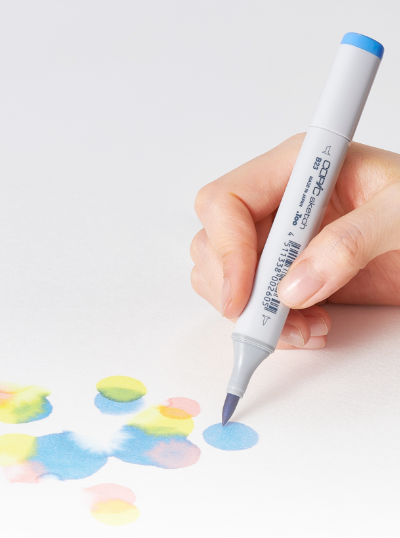The Basics : Blending Techniques
01-05-2019
Coloring Basics

Coloring in a zig-zag motion creates textures.

Coloring in small circles creates evenness.
Color Blending
Color with Super Brush nib in sweeping stroke with first color.

While it is still wet, add second color from the opposite side. Lift the pen up at the end of the stroke.

Go back to the first color and blend the border before drying. Add a lot of ink and really soak it by coloring in circles again.
Two Ways to Express a Boundary Line Between Different Colors
Sharp

Blurry
If you apply the dark color first, the lighter color may blur the boundary line between two colors.

Read More Articles
Writing with Acrea, Cursive Letters
Hello Copic readers! In our previous blog, we introduced writing with the new acrea marker by practicing our manuscript letterform...

Writing with Acrea, Manuscript Letters
Greetings Copic readers! In our previous blog, we compared the properties of Copic alcohol markers (Sketch, Ciao and Classic) with Copic...

Using Acrea and Copic Markers Together
Greetings Copic readers! In our previous blog, we compared the properties of Copic alcohol markers (Sketch, Ciao and Classic) with Copic...

Copic Sketch vs Acrea
Hello Copic readers! In our previous blog, we showed how to color with the new acrea paint markers on dark, non-white backgrounds. Today...






